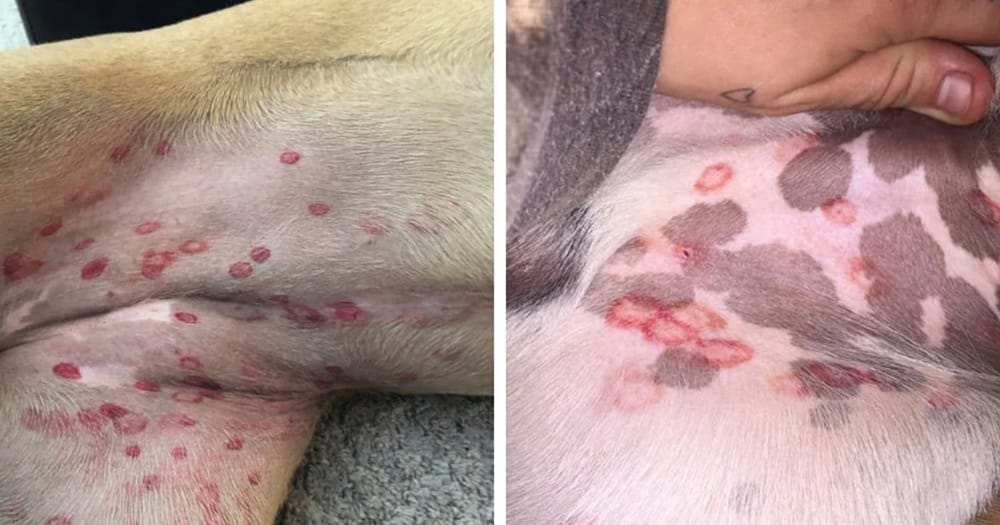If you’ve ever noticed red, irritated circles on your dog’s stomach, it’s natural to be concerned and consider taking them to the vet immediately. However, before you rush to conclusions, it turns out that these bites might not be as concerning as they appear.
Recently, the Morinville Veterinary Clinic in Alberta, Canada, shared some helpful information on their Facebook page, addressing a common worry among pet owners. They revealed that those red marks on your dog’s belly could likely be the result of fly bites. The clinic explained: “We’ve been receiving more calls about red bites on dogs’ stomachs. These are fly bites, and they usually happen when dogs lie in the grass. Although they may look alarming, they typically don’t cause the dogs any discomfort. They heal quickly on their own and don’t require treatment. These flies are most commonly around in the spring for a few weeks before disappearing.”
The clinic’s message served as a reminder to pet owners not to overreact and to avoid unnecessary vet visits. The post quickly gained attention, going viral as pet owners shared their own experiences of finding similar bites on their dogs. Many were relieved to know that they didn’t need to rush their pets to the vet, potentially saving themselves from expensive bills. One user commented, “Thank you for this information! I was just about to head to the vet and spend $200 I don’t have!”
So, what causes these strange-looking bite marks? The culprit is likely black flies, which are common in North America, particularly in northern areas. Michael San Filippo, a spokesperson for the American Veterinary Medical Association (AVMA), explained that these fly bites are typically harmless. However, it’s still important for pet owners to be cautious and not ignore or downplay any unusual marks on their dog’s skin, as similar symptoms could be the result of other pests or health issues that require attention.
While black fly bites are usually harmless, they can still be concerning if not addressed properly. San Filippo advised that pet owners should always be vigilant for any changes in their pet’s skin or behavior, as other conditions could cause similar markings. “If you notice any unusual bites, injuries, or changes in behavior, it’s always a good idea to consult with your vet,” he said. “It’s important to take into account your pet’s age, medical history, and overall health, as well as the specific health risks that might exist in your area.”
The clinic and experts both cautioned that other causes could be responsible for bites or marks that look like fly bites. It’s crucial to consider other potential issues, such as allergic reactions or bites from different pests, which may require more immediate care. As always, if you’re ever in doubt, reaching out to your vet for guidance is the safest option.
The post from the Morinville Veterinary Clinic served as a timely reminder for pet owners to stay informed and not panic over something that’s often temporary and harmless. With this knowledge, many dog owners are now better equipped to recognize these fly bites and differentiate them from more serious issues.
If you ever find yourself in a situation where your dog has these red marks, the best advice is to monitor the bites. As long as your dog isn’t showing signs of discomfort or other health issues, there’s likely no need for concern. However, if the marks persist or you notice any additional unusual symptoms, always feel free to consult your vet to ensure your dog’s health and well-being.
